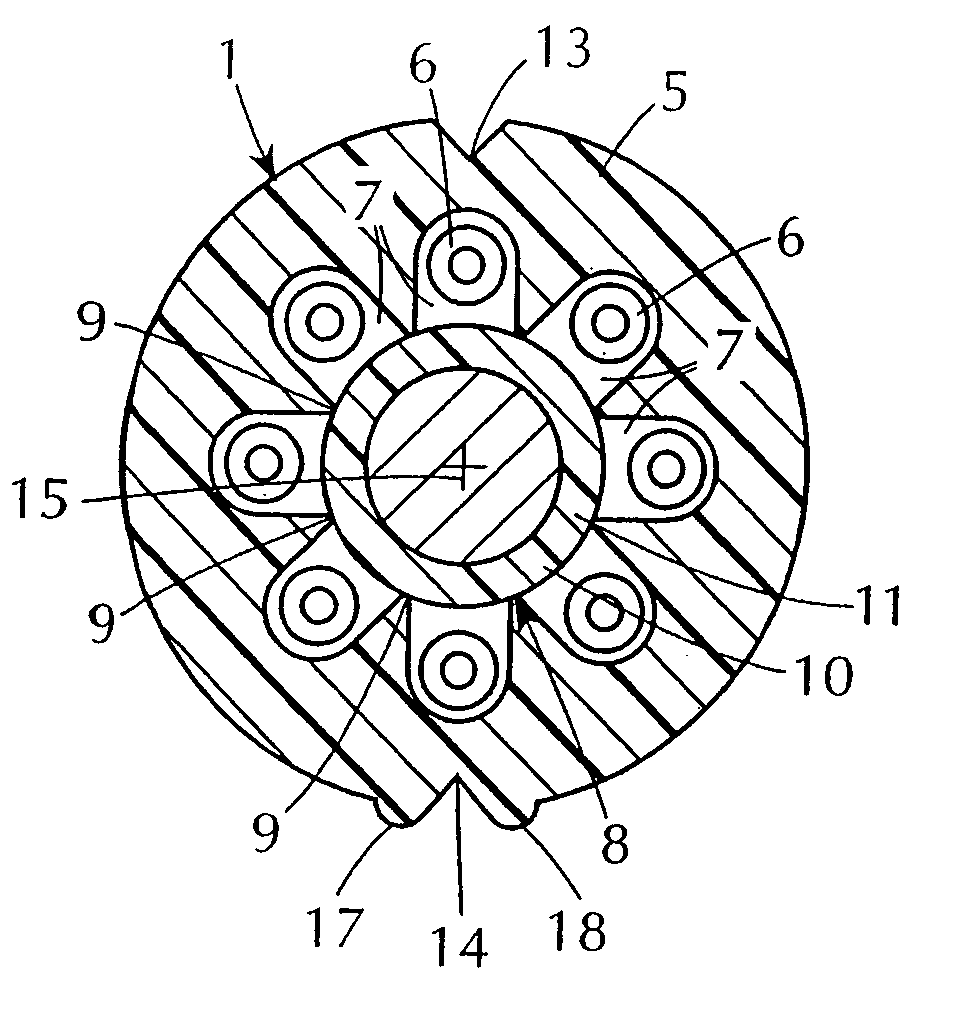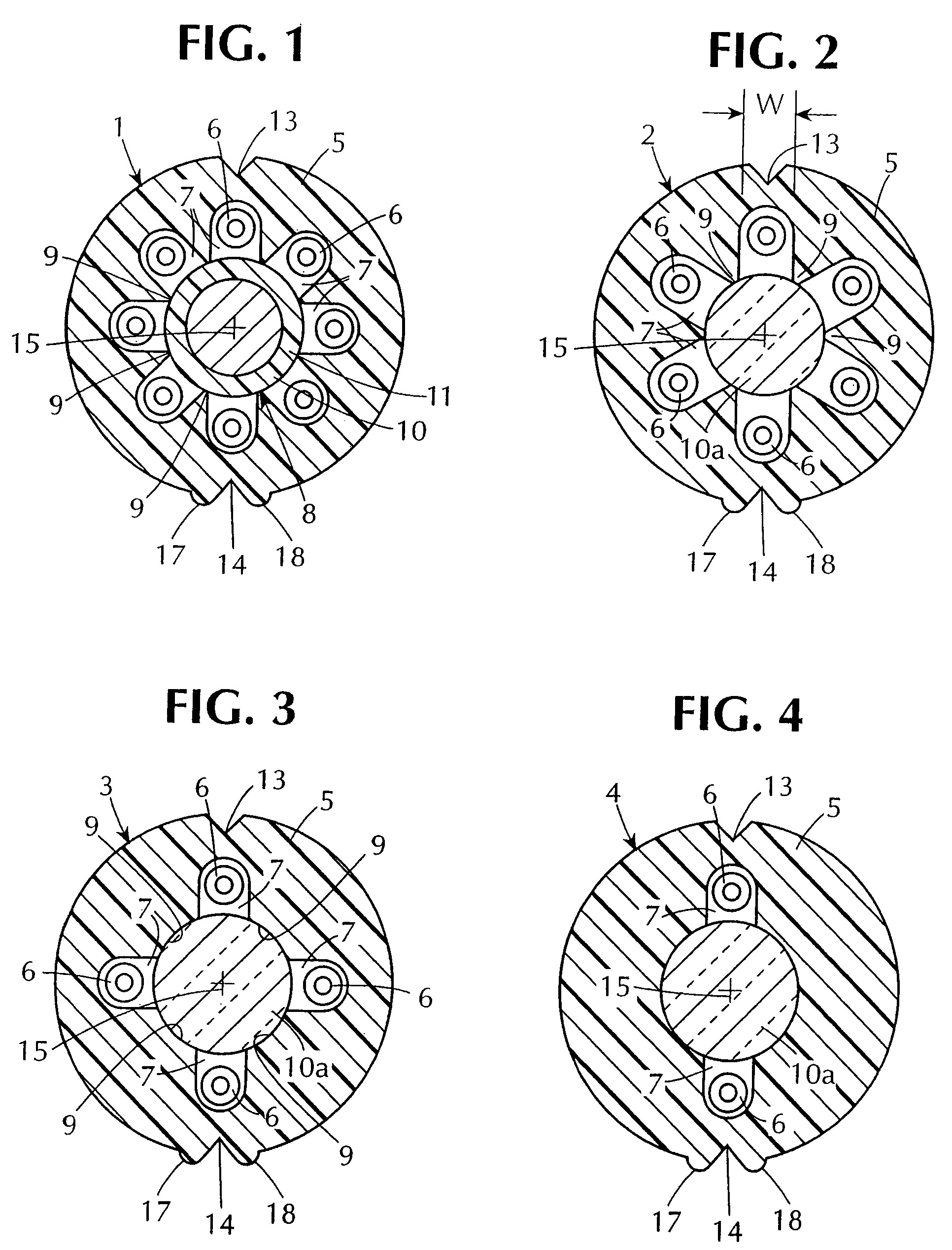Optical fiber cable with fiber receiving jacket ducts
a technology of optical fiber and receiving jacket, which is applied in the direction of optics, fibre mechanical structures, instruments, etc., can solve the problems of less flexible cable, difficult identification of groups, and inefficient use of space within the cable, so as to reduce the adhesion of fibers to the jacket and the strength of the strength member
- Summary
- Abstract
- Description
- Claims
- Application Information
AI Technical Summary
Benefits of technology
Problems solved by technology
Method used
Image
Examples
Embodiment Construction
[0032]FIGS. 1–4 illustrate, in cross-section, embodiments of the cable of the invention comprising, respectively, eight, six, four and two optical fibers. The cables can include a greater or lesser number of optical fibers, but normally, will not include more than twelve or less than two optical fibers.
[0033]Each of the cables 1–4 illustrated in FIGS. 1–4 has a tubular jacket 5 made of a plastic conventional in the art, such as polyvinylchloride or polyethylene. Since the cable of the invention can be used indoors as well as outdoors, preferably, the plastic is a plastic which will meet National Electric Code requirements for thickness, and flame propagation and which is low smoke producing. See, for example, cited U.S. Pat. No. 5,390,273.
[0034]Preferably, the diameters of the outer surface of the jackets 5 are kept as small as possible consistent with the required protection of the optical fibers and the required size of the jacket slots hereinafter described. For example, the diam...
PUM
 Login to View More
Login to View More Abstract
Description
Claims
Application Information
 Login to View More
Login to View More - R&D
- Intellectual Property
- Life Sciences
- Materials
- Tech Scout
- Unparalleled Data Quality
- Higher Quality Content
- 60% Fewer Hallucinations
Browse by: Latest US Patents, China's latest patents, Technical Efficacy Thesaurus, Application Domain, Technology Topic, Popular Technical Reports.
© 2025 PatSnap. All rights reserved.Legal|Privacy policy|Modern Slavery Act Transparency Statement|Sitemap|About US| Contact US: help@patsnap.com



